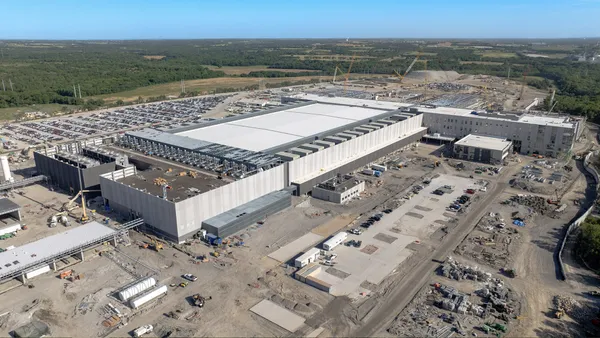Dive Brief:
- The U.S. Department of Energy reported that energy-related projects provided more than 2 million construction jobs in 2016.
- The department's second annual U.S. Energy and Employment Report estimated that overall energy-related employment represented 31% of the total U.S. construction labor force in 2016, up from approximately 27% in 2015.
- The DOE determined that approximately 1.4 million workers were involved in the energy-efficiency segment, with about 250,000 employed in the generation and fuels construction arena and almost 425,000 engaged in transmission, distribution and storage. The DOE also projected that the number of construction workers in the energy-efficiency segment would increase by 10.6% in 2017.
Dive Insight:
The energy-efficiency construction sector includes companies and individuals that build and design energy-efficient houses and offices, as well as the workers who actually install the features, according to the department. The overall energy sector grew 5% in 2016 by adding 300,000 net jobs.
The construction industry has been experiencing a measurable change in mindset regarding green building and sustainability, with a significant portion of that change driven by increased demand from owners. According to Dodge Data & Analytics' World Green Building Trends 2016 report, green building is doubling every three years.
Not only does DOE track how many workers are involved in energy-efficiency projects, but it also promotes efficiency programs as well. In December, the agency kicked off its Better Buildings Zero Energy Schools Accelerator initiative, which encourages schools to become more energy-efficient via building design. The DOE said the program could shrink school energy consumption by 65% to 80% through the use of elements like natural daylight and modern HVAC systems.
The DOE's net-zero program for schools echoes a global movement on the part of the World Green Building Council. In June 2016, the organization unveiled its "Advancing Net Zero" initiative, which aims to achieve 100% net-zero buildings by 2050. Another part of the WGBC program is a push to get all new buildings and those with major repairs or renovations underway net-zero energy-compliant by 2030.














